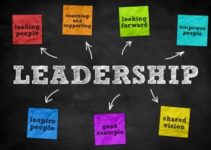What is Leadership Power? Types of Leadership Power
It is never enough to call someone a “leader” without power to show for it. In other words, “for an individual to be called a leader, power has to be in the equation”. People don’t follow leaders without power. However, knowing the different sources and limits to which one can exercise power in an organizational setting is essential.
Without that, one can genuinely utilize power to lead team members and achieve success. Also, power differentiates or draws the line between managers and subordinates. This post highlights the six types of powers and their features.
Social psychologists John R. P. French and Bertram H. Raven conducted a remarkable study about power in 1959. They stated that power is divided into six separate and different forms.
The Six Types of Leadership Power
1. Reward Power
Reward Power is one of the weakest forms of power. It is a situation whereby an individual possesses the capacity or financial capability to reward or recognize another for compliance. Reward power has widespread application in today’s business environment because it can serve as a motivating factor.
It is also applied in other settings or situations. Remember buying pizza for a colleague that agreed to assist you in completing a task and later did? That’s basically what reward power entails.
But then, this form of power is weak and limited in several ways. For instance, once the recipient receives the reward for the task, power is gone. The award also has to have value otherwise the recipient might take it for granted. So, therefore, reward power is only effective if the reward in question is worth something to the recipient.
However, reward power isn’t that terrible. It can be a bit effective when used appropriately. It can even serve as a form of inspiration or motivation to team members. Think of presenting a trophy to the best performer in a department. The reward might not be of much value in monetary terms, but others will be inspired to work harder so they can be recognized next time.
2. Coercive Power
Coercive Power is wielded by leaders who have the authority to punish employees or subordinates that fails to do their bidding. Also, this type of power doesn’t have much impact on the business environment because most employees might fight back or resign, leaving the company short of staff. But it’s still one of the most used types of power in the corporate world.
Many leaders with coercive power abuse it in most cases because they know employees will submit to them. Failure to obey can lead to punishment such as a sack, suspension, or even demotion. However, this type of leadership style leads to fear, job dissatisfaction, and poor performance in most cases.
3. Legitimate Power
The position plays a crucial role in this regard. Top officials, managers, or executives usually possess this power as a result of the place they occupy within the organization. But if there is a change in position, the power does not move with the official or individual in question to the new level.
Legitimate power is formed as a result of the laws that exist in an organization. And one common organization where this type of power is common is in the military. The leader has the capacity and legal backing to manage resources, reward, and even punish erring subordinates.
4. Referent Power
Referent Power is the type of power whereby an individual attracts or gathers other people who later become loyalists. Power can also come from respect for the said individual. People can also choose to become loyal to a person that has a proven track record of success or has handled other leadership positions successfully.
Some individuals are also born with referent power while others study leadership and groom themselves to a point where they can effectively lead others. But the bottom line is you cannot force people to bend to your wish or confer referent power upon yourself. You have to earn it.
An individual or the leader in question don’t acquire such power by force or have the capacity to punish others as someone with coercive power can. The power is as a result of the respect or trust others have on an individual they have collectively agreed to and chosen to be their leader.
5. Informational Power
Informational Power is exercised when an individual possesses the ability to limit or grant others access to relevant information. French and Raven divide it into personal and positional power. Information is vital in any setting, whether political or business. And having the ability to provide relevant information or an explanation using the right means is what informational power entails.
Informational power is the latest of the six types of power and considered one of the most effective among the different kinds of power. The individual in question can possess relevant information that others do not have but will be useful to them. And making the information known can lead to drastic change within an organization or business setting.
An individual that exercises informational power can use that power to manipulate other people’s opinion and get them to agree to his or hers. The persuasion can be through the use of altered statistical data or information. On the other hand, this type of power can be used to improve and also measure tasks, strategies, and processes.
6. Expert Power
Expert Power is almost similar to informational power. It centers on specialized skills, knowledge, and experience an individual has. The certificate one possesses (medical license for example) can be a way to recognize an individual with expert power.
But then, one can still display this power without having a certificate. You can exhibit expert power when you have sound knowledge of something that others don’t have.
Also, expert power is quite easy to develop and improve. You can talk to other experts ahead of you, read books or study hard, and gain more experience in that particular area of interest.
Conclusion
These are the six different types of powers. And being able to identify and differentiate each type before assuming any leadership position is something everyone must do. However, the majority of businesses use one or a combination of more than one power type. But the focal point is to ensure that no matter the kind of power selected, there will still be a positive impact on the organization.






